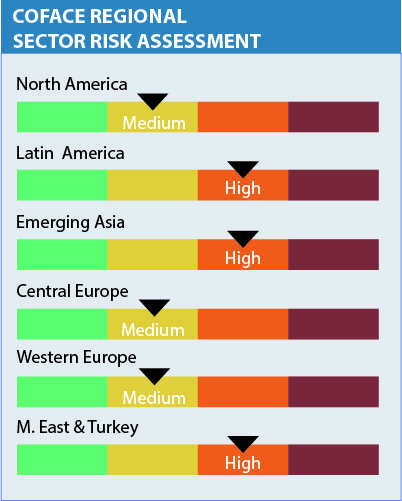Overview
In a favourable economic climate for housebuilding, builders in Western Europe are increasingly favouring wood in construction. Consumption of wood products in advanced countries rose significantly in 2017, and will continue to rise, albeit more slowly, in 2018. However, unprocessed wood prices have been trending downwards since 2014.

Strengths and weaknesses.
The main weakness of the timber sector is its overdependence on the housing and construction industries. It is also vulnerable to weather and natural events, such as storms and forest fires. A great strength, however is the pressure to use more sustainable products, which is driving the use of wood in construction and as an energy source all over the world. In 2017, wood accounted for one third of all renewable energy.
Wood is the classic case of an industry in which it pays to enjoy growing demand, but be prepared for sudden setbacks. With the protection from bad debt and insightful market intelligence provided by Coface credit insurance, you can trade with confidence.
Related resources
One unpaid bill?
Who gets paid first when a company goes bust? When a company goes into administration or liquidation, its remaining assets are sold to clear as many of its obligations as possible.
25 March, 2021
Trade Credit Insurance Explained – with working examples
Credit insurance protects you against bad debt. So if the worse happens, you still get paid.
18 March, 2021
The paradox of corporate insolvencies in Europe: miracle and mirage
The economic crisis caused by the COVID-19 pandemic heralded major business failures and insolvencies in France, and across the eurozone as a whole.. But, in 2020, and even if the real impact of the COVID-19 crisis remains
17 March, 2021